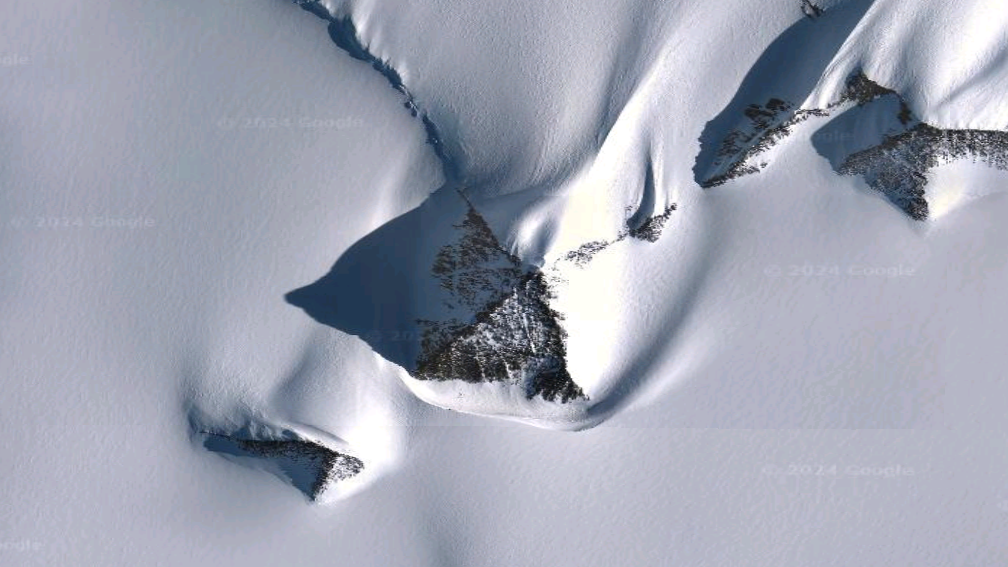
Name: Unnamed peak in the Ellsworth Mountains
Location: Antarctica
Coordinates: -79.9774614356392, -81.95892707235716
Why it's incredible: The mountain looks like a human-made pyramid.
A mountain that's hidden in a sea of snow in Antarctica looks strikingly like an ancient Egyptian pyramid when viewed from above. But no human (or alien) hands were needed to build this peak — it was forged through the slow, grinding process of erosion.
The pyramidal mountain, which doesn't have a formal name, became internet-famous in 2016, but scientists likely knew about it before then, Mauri Pelto, a professor of environmental science at Nichols College in Dudley, Massachusetts, previously told Live Science. A research base for climate scientists sits just south of the mountain in an area called the Patriot Hills, and "you can probably see this mountain from up there," Pelto said.
Related: 'We were in disbelief': Antarctica is behaving in a way we've never seen before. Can it recover?
Antarctica's "pyramid" is about 4,150 feet (1,265 meters) tall, or about one-fifth the height of Denali, the tallest mountain in North America. It has four steep sides and is located in the southern Ellsworth Mountains — a chain of jagged peaks first spotted during a flight by American aviator Lincoln Ellsworth in 1935, according to a U.S. Geological Survey (USGS) research paper published in 2007.
The region is known for holding 500 million-year-old fossils of trilobites and other critters dating to the Cambrian period (541 million to 485.4 million years ago).
The mountain's sides were likely carved and smoothed into a pyramid-like shape by hundreds of millions of years of erosion. Specifically, the rocks may have been subject to freeze-thaw erosion, which is when water and snow fill small cracks during the day and then freeze at night, Pelto said. The water expands in the cracks as it freezes, causing the gaps to grow larger under the resulting pressure and eventually causing large chunks of rock to break off of the mountain.
Three of the pyramidal mountain's sides appear to have eroded at the same rate, while the fourth side — the eastern ridge — formed independently, Pelto said.
Freeze-thaw erosion probably forged other pyramidal mountains, too, such as the Matterhorn in the Swiss Alps, Pelto added.
Various conspiracy theories sprung up to explain the shape of Antarctica's pyramid mountain when it went viral in 2016, with theorists contemplating the involvement of a forgotten civilization or aliens from outer space.
But "this is just a mountain that looks like a pyramid," Eric Rignot, a professor of Earth system science at the University of California, Irvine and senior research scientist at NASA's Jet Propulsion Laboratory, previously told Live Science. "Pyramid shapes are not impossible — many peaks partially look like pyramids, but they only have one to two faces like that, rarely four."
Discover more incredible places, where we highlight the fantastic history and science behind some of the most dramatic landscapes on Earth.







